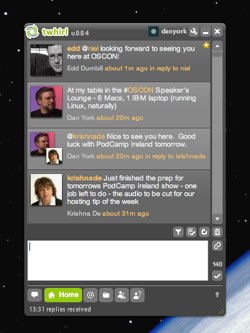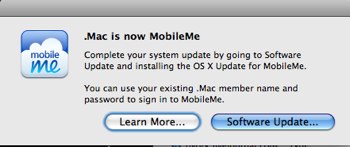Why does Facebook only let you import ONE feed from a blog or other site? Do they not think that you might have more than one RSS feed you want to import?
Forgetting for a moment Facebook’s draconian Terms of Service (which can be summarized quite simply as “ALL your content belongs to us – forever and always.” (I wrote about this a year ago or so.)), let’s say you do want to import in posts from your blog. This is quite simple (once you can find the Import tab):

Click on the “Blog/RSS” link, enter in the URL for your feed and… ta da… your blog posts start being imported as Notes into Facebook. Now all your friends who view the world through the lens of Facebook can also see the content you are writing outside of the Facebook walls.
But what if you have more than one RSS feed you want to import?
Oops.
No can do. You get exactly one “Blog/RSS” feed to import.
So what if you are someone like me who writes in a half a dozen different places (also here and here)? Sorry, but you’re out of luck.
Your options are really to either: 1) only import one of your various blogs, which is what I have been doing to date; or 2) create an aggregated feed of your blogs and import that.
For #2, you then must go off and create that aggregated feed using Yahoo Pipes, Friendfeed or any of the zillion other services out there. I recently decided to look at this again and immediately thought of my FriendFeed feed at friendfeed.com/danyork since I already use that service to aggregate my online writing.
The problem is that the way I use Friendfeed is as a giant fire hose that aggregates everything I write or publish publicly online. This includes duplicate items such as my twitter and identi.ca feeds (which are usually, but not always, the same). Pointing Facebook to my Friendfeed feed would wind up with all sorts of duplicate material entering Facebook (especially as someday in here I’ll sort out the Facebook <-> Twitter infinite loop I’ve created and get the interconnect happening there again).
Now in Friendfeed you can “hide” certain items from a feed from someone else… but I’ve not figured out a way in Friendfeed to do that in a feed of your own. So, naturally, my kludgey solution today was to:
- Create a second Friendfeed account and keep it a private account.
- Subscribe it only to my main Friendfeed account.
- Hide the various things in my main feed that I don’t want to see (i.e. Twitter, identi.ca)
- Take the resulting RSS feed from this second Friendfeed account and give that to Facebook to import.
Ta da… blog-only aggregation accomplished in about 5-10 minutes of mouse-clicking.
But what a kludge! (And yes, I could have probably done this even simpler in half a dozen other sites…)
Wouldn’t it be so much nicer if Facebook was like Friendfeed and let you import any number of RSS feeds? Take a look at this view of my Friendfeed page:
All the nice orange RSS icons are for various different feeds I’m importing. Why couldn’t Facebook do something like that? It would be great if they would… and probably would result in more content being brought into Facebook (and helping in their continued battle for world domination. 🙂
What do you think? What do you do if you have more than one blog or feed you want to import into Facebook? Or do you only have one blog? Or are you avoiding importing anything into Facebook because of their hideous Terms of Service?
If you enjoyed this post, please consider either subscribing to the RSS feed or following me on Twitter or identi.ca.
Technorati Tags:
facebook, rss, feeds, friendfeed
 As you can see in this screen capture, I am using the WordPress iPhone app and it IS working to post to
As you can see in this screen capture, I am using the WordPress iPhone app and it IS working to post to  Yesterday, the big news in the microblogging world was
Yesterday, the big news in the microblogging world was



